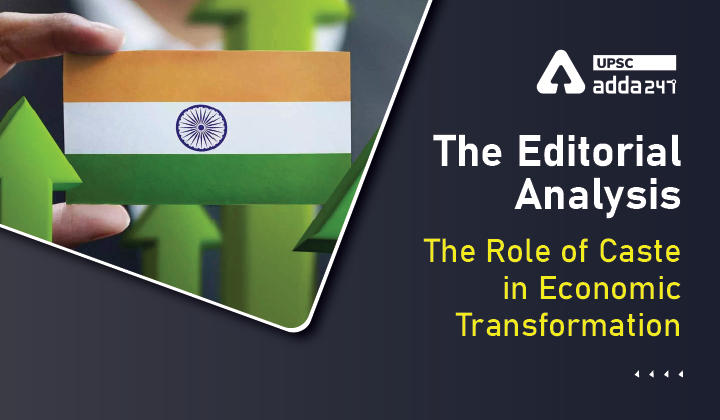Table of Contents
Relevance
- GS 1: Salient features of Indian Society, Diversity of India.
Context
- India is in a phase of jobless growth for at least two decades now. It is coupled with rising poverty and discontent in rural areas.
- The ongoing protests against the Agnipath programme, agitations against farm laws before, and agitation for reservation by agriculture castes are the outcomes of the jobless growth.
Role of caste in Indian economy
- In India, there is a link between economic transformation and caste.
- Caste, through its rigid social control and networks, facilitates economic mobility for some and erects barriers for others by mounting disadvantages on them.
- Caste also shapes the ownership pattern of land and capital and simultaneously regulates access to political, social, and economic capital too.
Caste restricting economic growth
- There are three ways in which caste restricts the economic transformation in India.
- The divergent outcomes in structural transformation between countries in the global South, particularly India, China and South East Asia, is primarily due to the following three factors.
- Ownership and land inequality related to productivity failure within the farm sector;
- Elite bias in higher education and historical neglect of mass education, and
- Caste-based entry barriers and exclusive networks in the modern sector.
Issues of caste in economy
- Land ownership: India has one of the highest land inequalities in the world today. Britishers colonial intervention legalised a traditional disparity. Moreover, Green Revolution also tightened the castes social control over others in rural India.
- Economic reforms: Those castes that had a stake in agriculture did not benefit from the economic reforms for two reasons — historical neglect of education and the entry barriers erected by the upper castes in modern sectors.
- Neglect in education: The Indian education system has been suffering from an elite bias since colonial times.
- Although the Indian Constitution guaranteed free and compulsory education under its directive principles, it was hardly translated into practice. Instead, attention was given to higher education for the elites.
- Wage differentials: Hence, inequality in access to education got translated into inequality in other economic domains including wage differentials in India.
- Entrepreneurship issues: Caste shaped policy outcomes, including India’s highly unequal land reform and lack of public provision of education and health, which in turn erected barriers to economic diversification.
- Social inequalities: Castes that were already in control of trading and industrial spaces resisted the entry of others. Even those who had economic surplus in farm sectors could not invest in non-farm modern sectors. Social inequalities have mounted barriers for economic transition.
Read current affairs for UPSC





 TSPSC Group 1 Question Paper 2024, Downl...
TSPSC Group 1 Question Paper 2024, Downl...
 TSPSC Group 1 Answer key 2024 Out, Downl...
TSPSC Group 1 Answer key 2024 Out, Downl...
 UPSC Prelims 2024 Question Paper, Downlo...
UPSC Prelims 2024 Question Paper, Downlo...
